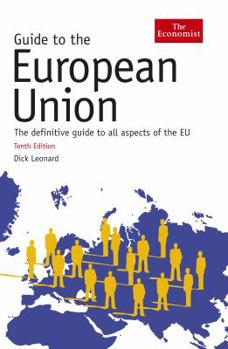Guide to the European Union
Select Format
Select Condition 
Book Overview
Guide to the European Union The Final Adoption of the Treaty of Lisbon gives the 27-member European Union new momentum as it enters the second decade of the 21st century, more that half a century since the six-member European Economic Community was established in 1957. That the countries of the euro area alone now account for a greater proportion of world exports of goods and services than the United States shows how far the EU has come and how, given strength and unity, it has the potential to provide a counterbalance between America and China. This revised and updated edition of this much-acclaimed guide to the working of the European Union is invaluable for anyone who wants to understand how the EU developed, how it works and the challenges it faces. Included in its comprehensive coverage are: How the institutions and committees work both in theory and in practice Where the money for the EU comes from and where it goes Facts and figures about the bureaucracy The single market and what it means for business The effects and implications of monetary and economic union and the introduction of the euro How enlargement will change the EU and the political considerations that will determine which other countries join The implications of the Lisbon treaty Every sphere of EU activity from workers' and women's rights to fishing and farming Now in its tenth edition, The Economist Guide to the European Union is well established as the most clear and comprehensive guide to how the EU operates. For everyone who lives and works in the EU - and for others who do business with EU countries - there is no better source of reference.
Format:Hardcover
Language:English
ISBN:1846681723
ISBN13:9781846681721
Release Date:May 2010
Publisher:Profile Books(GB)
Length:342 Pages
Weight:1.20 lbs.
Dimensions:1.3" x 5.8" x 8.6"
Customer Reviews
1 rating
Great & Quick Service
Published by Thriftbooks.com User , 18 years ago
Everything turned out great, and the book gave me all the information I needed for my presentation.






